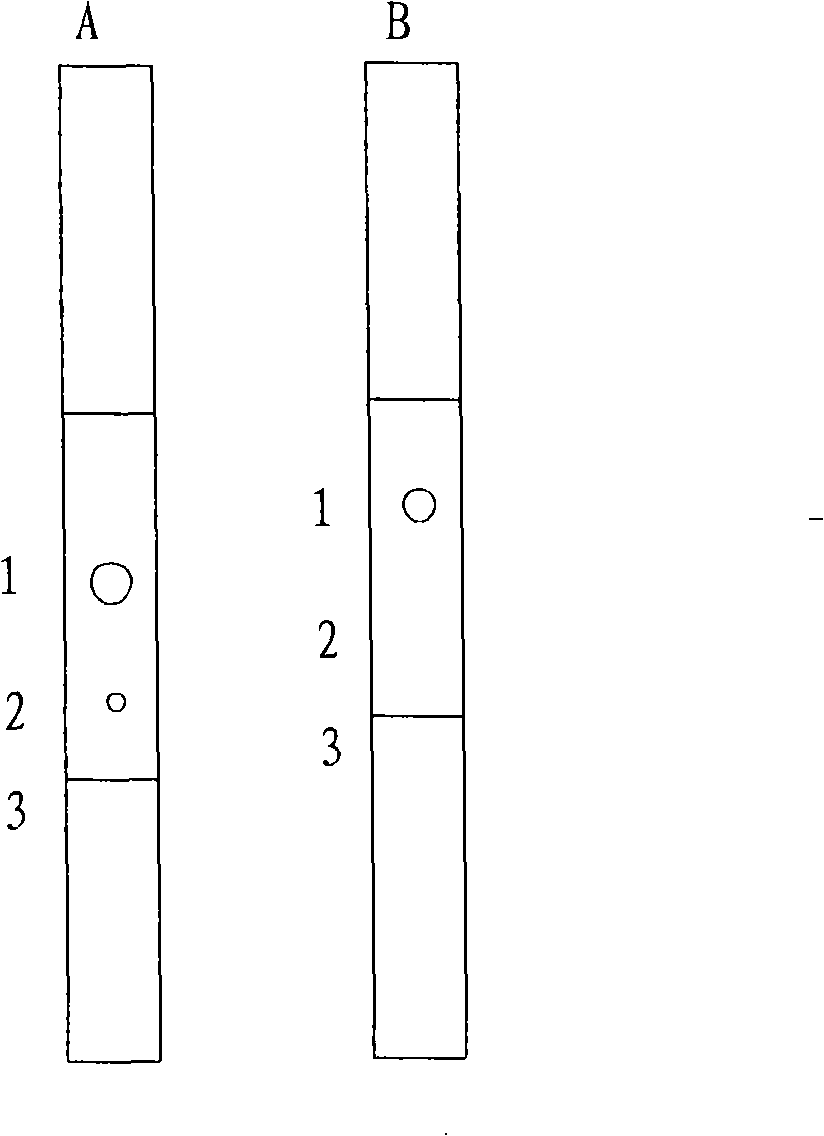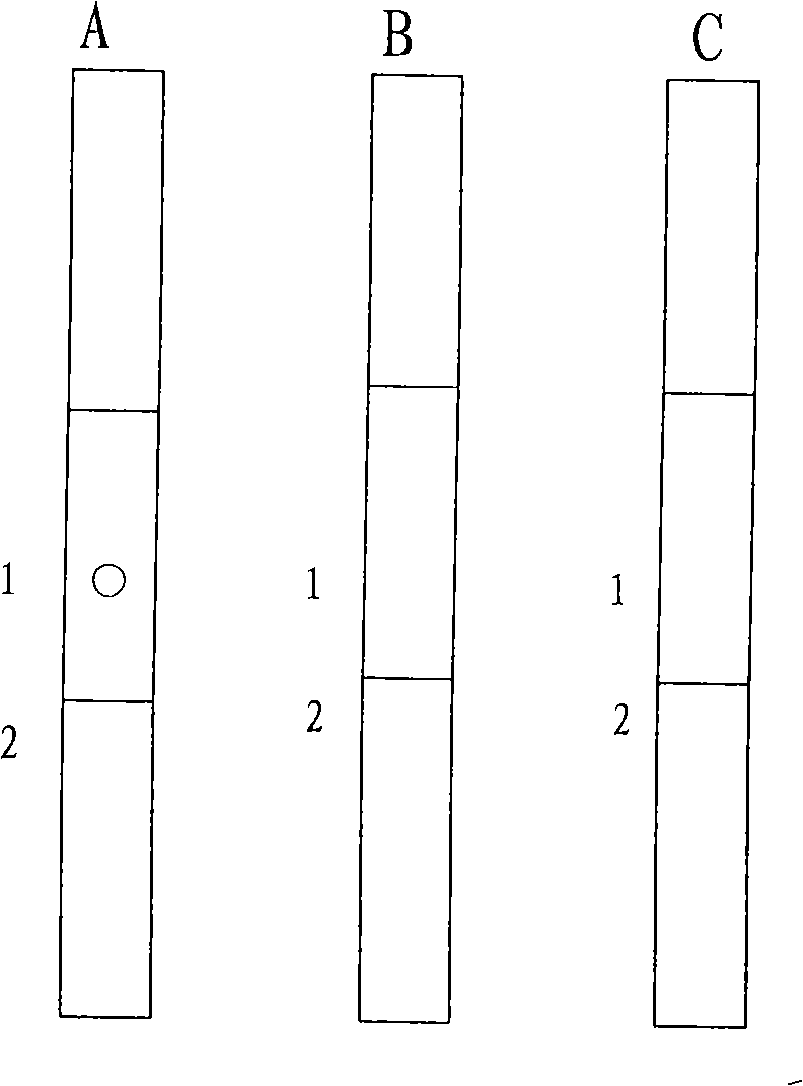Immune colloidal gold chromatography method for detecting food allergy to aquatic products
A technology for food allergy and colloidal gold, which is used in material inspection products, measuring devices, biological tests, etc., to achieve the effects of clear and storable results, low cost, and easy operation.
- Summary
- Abstract
- Description
- Claims
- Application Information
AI Technical Summary
Problems solved by technology
Method used
Image
Examples
Embodiment 1
[0023] Embodiment 1: Colloidal gold chromatography of rabbit anti-TM antibody detects whether TM is contained in the sample
[0024] (1) Preparation of colloidal gold. Take 1.0mL of chloroauric acid and add it to 100mL of ultrapure water. After heating to boiling, quickly add 4mL of 1% trisodium citrate, heat and boil for 8 minutes to obtain a transparent, wine-red colloidal gold solution.
[0025] (2) Colloidal gold labeling of proteins. Add rabbit anti-TM antibody to the colloidal gold solution drop by drop while stirring, the final protein concentration is about 8 μg / mL, continue to stir for 0.5 h; add 200 μL 10% bovine serum albumin (BSA) drop by drop while stirring, continue to stir for 10 min , let stand overnight. Centrifuge the protein solution labeled with colloidal gold at 5000g at 4°C for 10min; take the supernatant and centrifuge at 17000g at 4°C for 30min; suck out the supernatant to obtain colloidal gold-labeled protein, and dissolve the precipitate in 2mL of p...
Embodiment 2
[0030] Example 2: Colloidal gold chromatography of shrimp and crab TM detects whether TM antibody is contained in the serum of allergic persons
[0031] Such as Figure 4 Shown, label 1. Shrimp TM; 2. Scylla TM; 3. Colloidal gold-labeled prawn TM.
[0032] The preparation of the immunocolloidal gold chromatography test strip refers to Example 1 (wherein the colloidal gold-labeled protein is replaced by the shrimp and crab TM in this example from the rabbit anti-TM antibody in Example 1). Immobilize 1 μL of Shrimp TM and Scylla TM on the two detection areas on the nitrocellulose membrane of the immunogold test strip, and add 12 μL of colloidal gold-labeled Shrimp TM to the gold label area to detect whether there are TM antibodies in human serum samples. From Figure 4 It can be seen from the note A in the test that the sample to be tested is the serum of a person allergic to TM, and as a result, red spots appear in both detection areas; Figure 4 The sample to be tested in pap...
Embodiment 3
[0033] Example 3: Colloidal gold chromatography of silver carp Par detects whether there is Par antibody in the serum of allergic persons
[0034] Such as Figure 5 As shown, labels 1. Silver carp Par; 2. Crucian carp Par; 3. Colloidal gold-labeled silver carp Par.
[0035] The preparation of the immunocolloidal gold chromatography test strip refers to Example 1 (wherein the colloidal gold-labeled protein is replaced by the silver carp Par in this example from the rabbit anti-TM antibody in Example 1). 1 μL silver carp Par and crucian carp Par were immobilized in the two detection areas on the nitrocellulose membrane, and 12 μL colloidal gold-labeled silver carp Par was added to the gold label area to detect whether Par antibodies were contained in human serum samples. From Figure 5 It can be seen from the paper note A in the test that the sample to be tested is the serum of a person allergic to Par, and red spots appear in both detection areas; Figure 5 The sample to be ...
PUM
 Login to View More
Login to View More Abstract
Description
Claims
Application Information
 Login to View More
Login to View More - R&D
- Intellectual Property
- Life Sciences
- Materials
- Tech Scout
- Unparalleled Data Quality
- Higher Quality Content
- 60% Fewer Hallucinations
Browse by: Latest US Patents, China's latest patents, Technical Efficacy Thesaurus, Application Domain, Technology Topic, Popular Technical Reports.
© 2025 PatSnap. All rights reserved.Legal|Privacy policy|Modern Slavery Act Transparency Statement|Sitemap|About US| Contact US: help@patsnap.com



